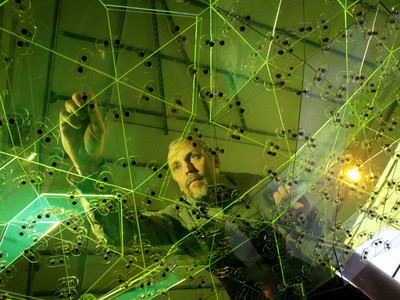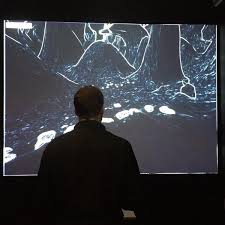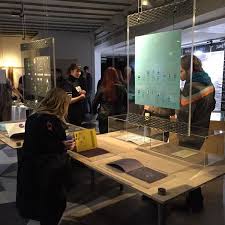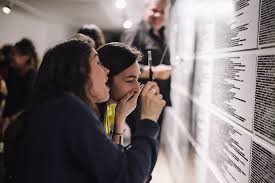Lifelogging at the Dublin Science Gallery
Guest Blog by Gina Kelly
Science Gallery is a new type of venue at Trinity College Dublin. As a student at Trinity, I had visited it many times before I started working on this exhibition, and love exploring its ever changing Gallery. It’s an exciting place, with new ideas and events every week. I joined the team last September, when the idea for a lifelogging exhibition was in its early stages.
With this exhibition, we wanted to ask; if you could measure everything, would you? And does what is measured necessarily improve? The societal implications of new technologies and norms are important to explore, and Science Gallery aims to challenge and engage its visitors in emerging topics that cross between both art and science. This exhibition aims to challenge them to explore one of the remaining frontiers of data science; themselves.
LIFELOGGING: DO YOU COUNT? has been in development for quite a few months now, and from the perspective of a researcher joining the team specifically for LIFELOGGING, it’s been a wonderful process to observe and be a part of. There have been so many great conversations and ideas shared between our curators, artists, designers, researchers and companies, culminating in 16 unique pieces showing both data and personal stories in imaginative ways. Seeing the journey of an idea from a concept, to engagement with artists and scientists from around the world through to a living, breathing exhibition which has been designed and painstakingly constructed down to the nuts and bolts of each display table is both fascinating and exciting.
Lifelogging blurs exciting boundaries, and new technologies are allowing us to reach beyond our senses like never before. We set out to create an exhibition that explores the people behind personal sensing and the stories they created from their data, while looking at societal level issues of privacy and the value of data, and the direction that wearable technology is going.
From a piece that lets you explore a virtual reality world filled with the pictures and sounds of the artist’s life over weeks, months and years to a sculpture that will be carved by lasers based on people’s movement through the exhibition, the range of data visualizations presented by the artists gives an insight into the meaning we can take from our personal data, along with the value we should place on it.
Another component of the exhibition is a dedicated lab space, where each week different teams of researchers, designers and companies will test new technologies and conduct experiments with the public. This will range from the creation of visual lifelogs with the aid of EEG sensing, to experiments aimed at optimizing our relationships and exploring our online digital footprint. Visitors will be able to take part in the experiments or attend focused workshops, talks and events taking place throughout each day.
LIFELOGGING has been open since mid-February, and will run until the 16th of April. We are capturing the events, workshops, labs and exhibition on our new Narrative Clip, which is being worn by exhibition staff to create a lifelog of each day, recording the story of the exhibition over 9 weeks in total.
The exhibition LIFELOGGING: DO YOU COUNT? runs 13.02.15 – 17.04.15 at Science Gallery Dublin





